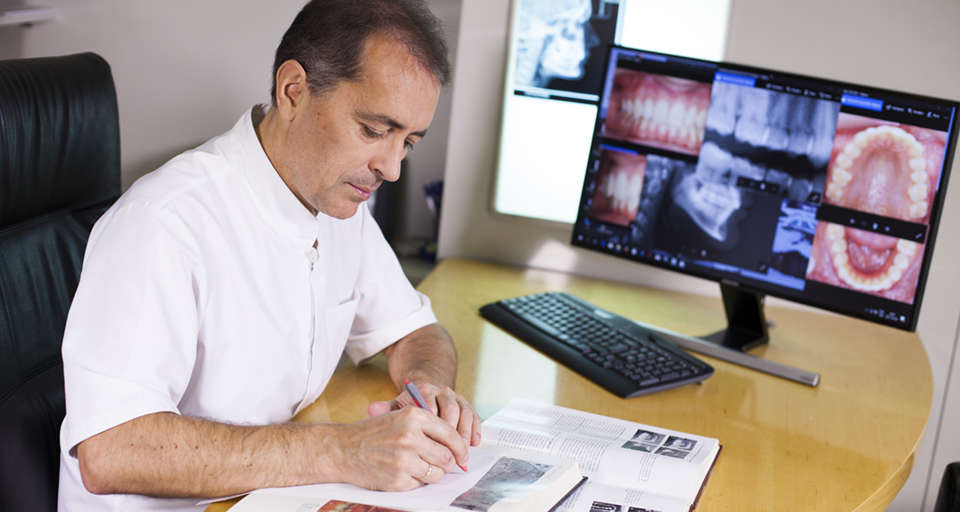The cervical vertebrae maturation (CVM) method cannot predict craniofacial growth in girls with Class II malocclusion.
Written by admin on February 22, 2016
Eur J Orthod. 2016 Feb;38(1):1-7. doi: 10.1093/ejo/cju085. Epub 2015 Feb 8.
Engel TP(1), Renkema AM(2), Katsaros C(1), Pazera P(1), Pandis N(1), Fudalej PS(3)(4).
Author information:
(1)*Department of Orthodontics and Dentofacial Orthopedics, University of Bern,
Switzerland.
(2)Department of Orthodontics and Craniofacial Biology, Radboud University
Medical Centre, Nijmegen, The Netherlands.
(3)*Department of Orthodontics and Dentofacial Orthopedics, University of Bern,
Switzerland, piotr.fudalej@zmk.unibe.ch.
(4)Department of Orthodontics, Palacky University, Olomouc, Czech Republic.
Comment in
Eur J Orthod. 2016 Feb;38(1):111-112.
Eur J Orthod. 2016 Feb;38(1):112.
INTRODUCTION: The cervical vertebrae maturation (CVM) method is used to
determine the timing of treatment of Class II malocclusion. Because its
performance has not been tested in patients with Class II, the objective of this
study was to evaluate the effectiveness of the CVM method in predicting
craniofacial growth in Class II malocclusion.
METHODS: Twenty-nine untreated girls with Class II malocclusion were identified
among participants of the Nijmegen Growth Study. Each girl had a series of
cephalograms taken semi-annually from 9 to 14 years of age. The CVM status was
established by five observers on a cephalogram taken at 9 years; mandibular and
maxillary length and anterior face height were assessed on all available
cephalograms. Method error was evaluated with kappa statistics and Bland-Altman
(BA) plots. Regression analysis was used to determine if CVM grade can predict
the amount of facial growth.
RESULTS: The mean kappa for intra-rater agreement during grading with CVM was
0.36 (fair agreement). BA plots demonstrated acceptable agreement for
cephalometric measurements. The regression analysis demonstrated that the only
chronologic age was associated with the facial growth. The largest effect of age
was for condylion-gnathion (Cd-Gn) and articulare-gnathion (Ar-Gn)-for every
additional 6 months the Cd-Gn increases by 1.8mm [95 per cent confidence
interval (CI): 1.7, 1.9, P < 0.001] and Ar-Gn increases by 1.59mm (95 per cent
CI: 1.52, 1.67, P < 0.001). The CVM grade could not predict the change of
cephalometric variables.
CONCLUSIONS: There is no evidence to support the hypothesis that the CVM method
can predict the amount of craniofacial growth in girls with Class II
malocclusion.
© The Author 2015. Published by Oxford University Press on behalf of the
European Orthodontic Society. All rights reserved. For permissions, please
email: journals.permissions@oup.com.
DOI: 10.1093/ejo/cju085
PMID: 25667036 [Indexed for MEDLINE]




